The internet, in its nascent form, was vastly primitive compared to today’s multifaceted web. Now Web 3.0, rapidly gaining ground, promises a next level sophisticated decentralized system based on next-generation technologies.
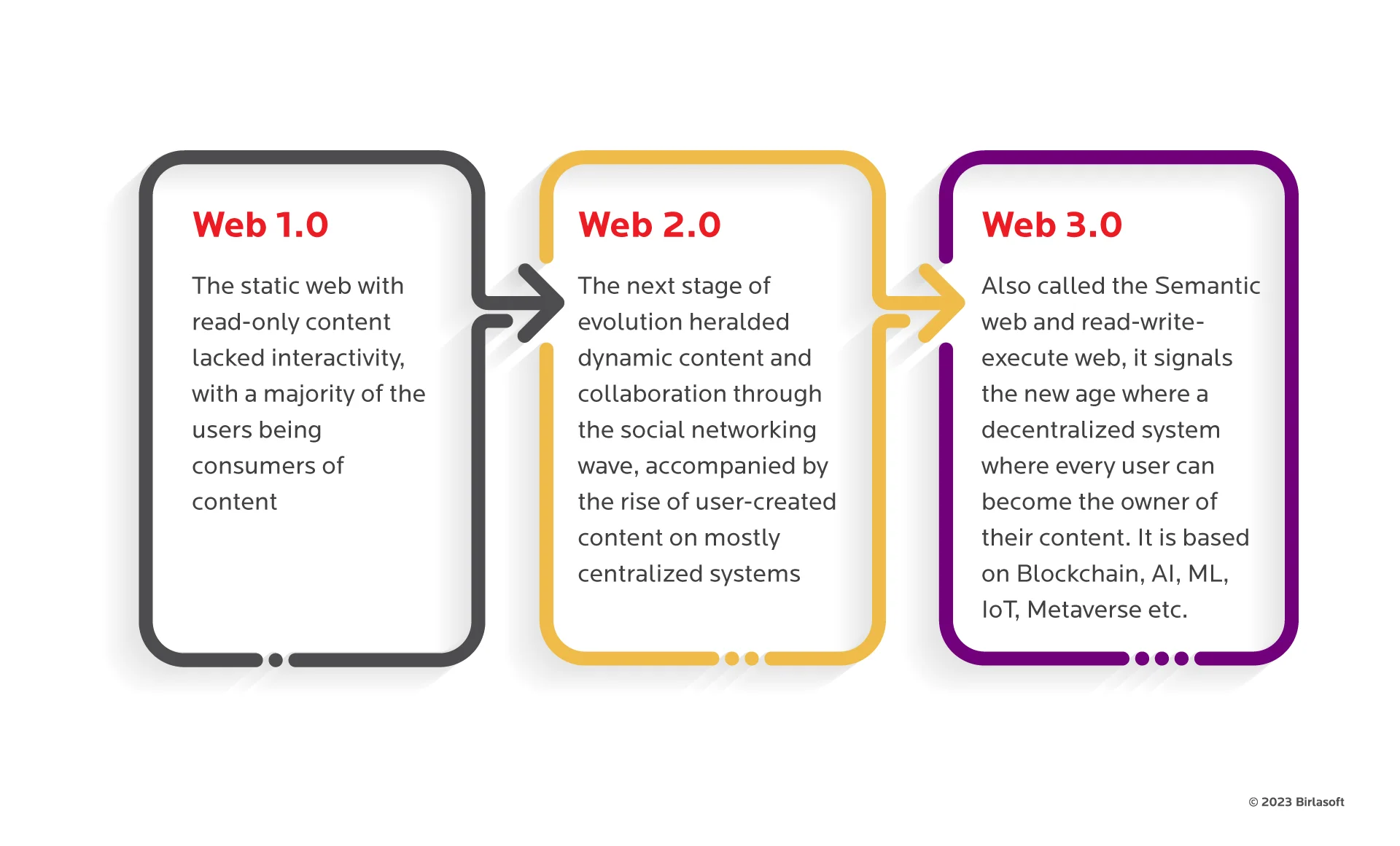
The evolution of the web
While it’s still early days for Web 3.0, the initial hype surrounding it has been overshadowed by concerns such as a lack of clarity in regulation, poor user experience, and worries over security. While these challenges have to be addressed and overcome, there is no doubt that Web 3.0 could transform the way the internet is structured and used.
As organizations stand at the crossroads of deciding to adopt Web 3.0, understanding its features, principles, and advantages could go a long way to help in making informed decisions that could pave the way for exponential growth powered by the internet of the future.
The Building Blocks of Web 3.0
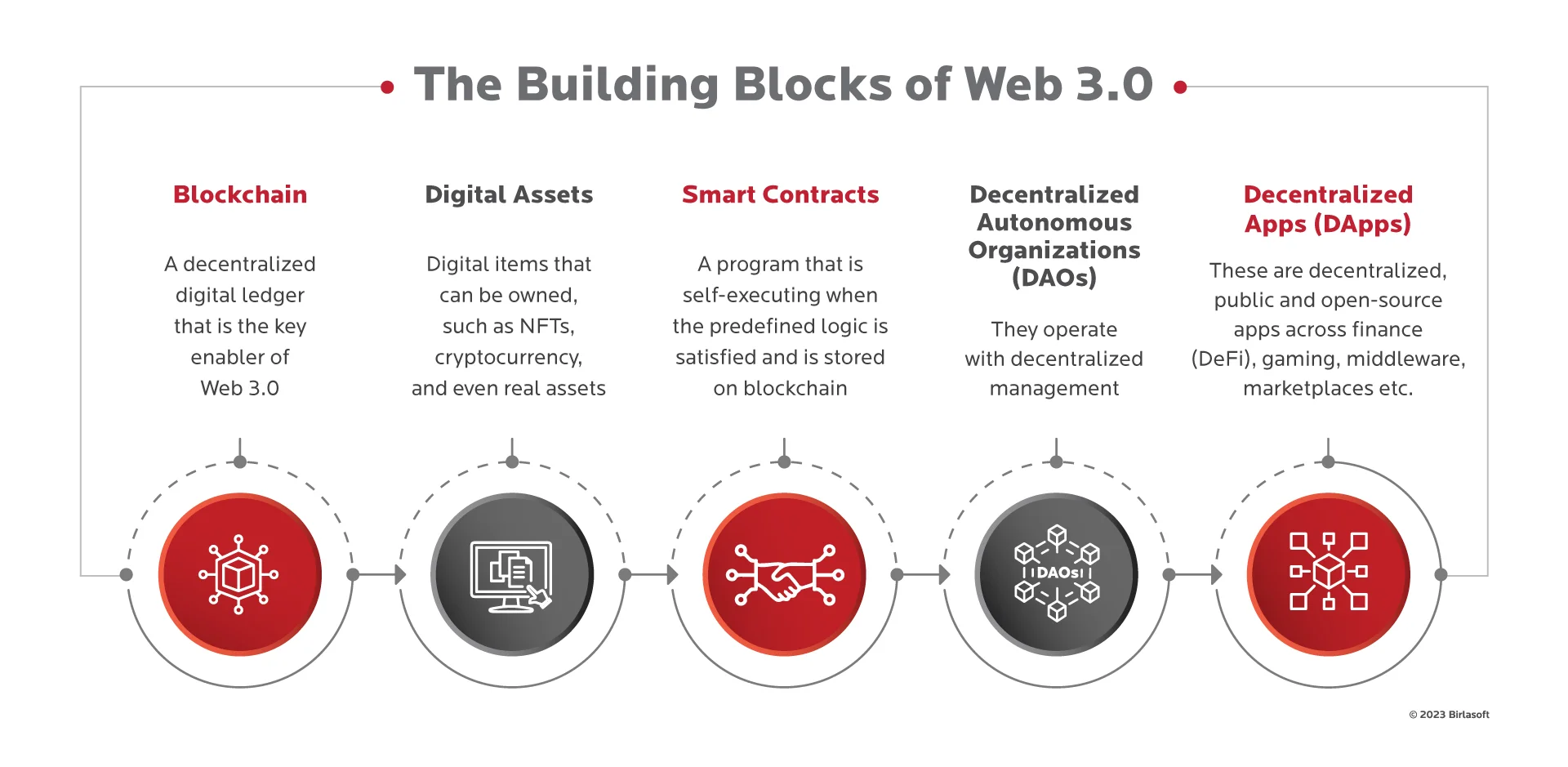
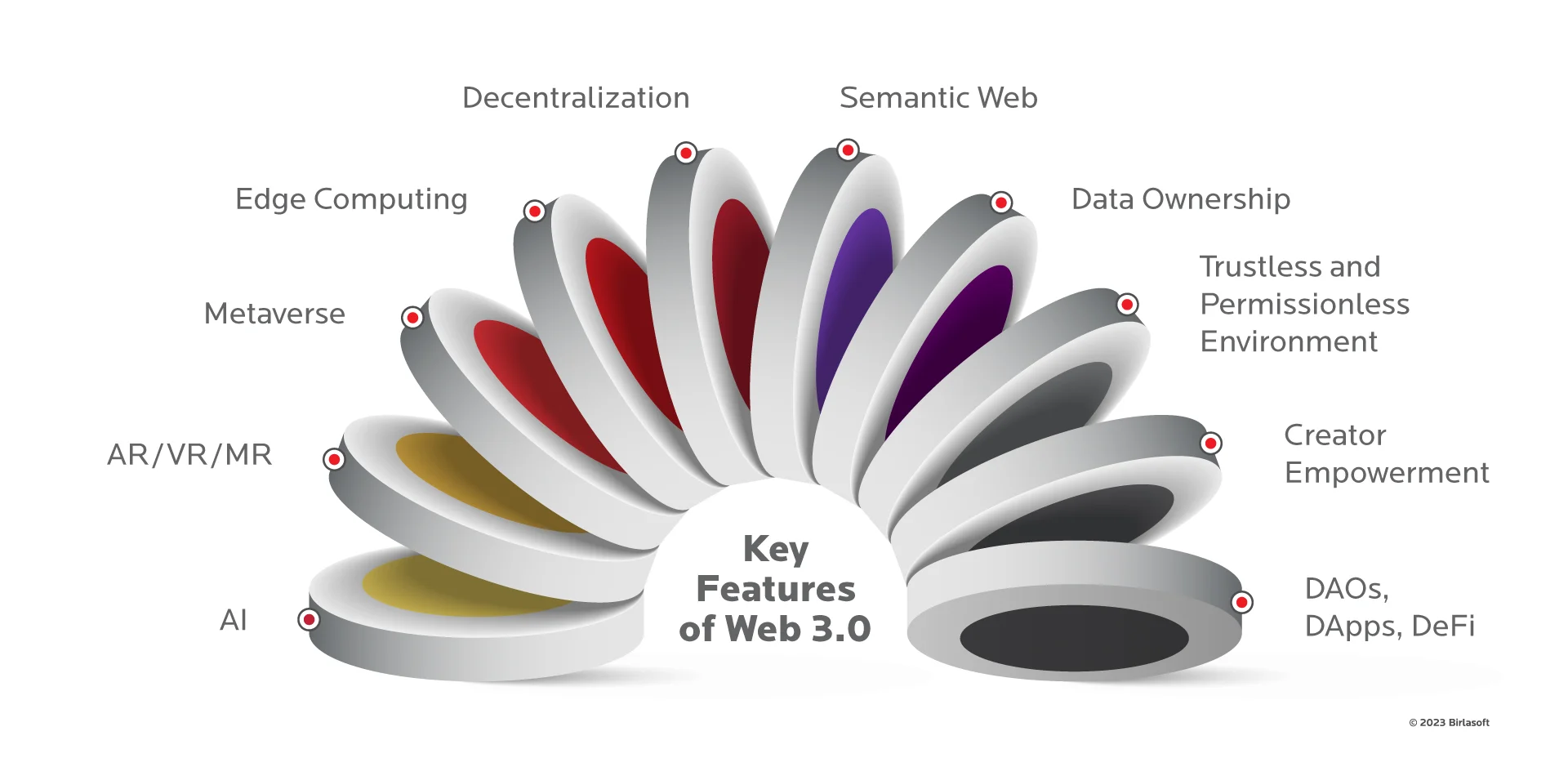
The key features and resulting benefits of Web 3.0 include:
- Semantic web - Semantic categorization allows information to be categorized and stored in a manner that enables AI systems to interpret, search and analyze information easily. This is more efficient and intelligent than earlier iterations.
- Decentralization - Unlike Web 2.0, no large entities will control major parts of the web. This shifts power to the users of a platform.
- Ownership - Ownership is distributed, and users have control over their data, its usage, and distribution, giving them complete autonomy in their transactions.
- Trustless and permissionless environment - Third parties are not required, and anyone accessing the network has permission to interact with it. There is no requirement of validation or authorization.
- AI - AI will be the foundation for intelligent automation in Web 3.0. Additionally, AI and ML will enable greater relevance for Web 3.0 by optimizing, personalizing, and tailoring it to the needs of individual users.
- AR/VR/MR - While earlier versions of the web were two-dimensional, Web 3.0 is slated to offer spatial experiences, bridging digital and reality to allow users to interact with it through sensory triggers. This is expected to transform the retail and e-Commerce industries.
- Metaverse - The Metaverse is expected to power immersive experiences using AR/VR/MR, blurring the lines between digital and reality with a virtual replica of the real world that empowers users to work, play, socialize, and interact with 3D objects through their avatars. Metaverse can be a game-changer for retail, entertainment, education, hospitality, tourism, and gaming industries.
- Edge computing - Edge computing promises to bring capabilities closer to the user on edge devices, reducing latency and boosting speed.
- Creator empowerment - The creator economy powered by Web 3.0 will liberate creators from the grip of intermediaries and open new avenues for monetization.
- DAOs - Decentralized Autonomous Organizations allow participants to form an entity that has no governing authority. These entities will depend on smart contracts, and decision-making is usually done through publicly viewable voting processes where all users participate, but the voting power depends on the number of tokens the user holds. Decentralized authority, participation, and community are key features of DAOs.
- DApps - DApps are decentralized, public, and open-source apps whose backend architecture is different from traditional apps. While the frontend is mostly like traditional apps, the backend is vastly different as they run on a peer-to-peer network like blockchain.
DeFi - Decentralized Finance refers to financial apps built on blockchain using smart contracts. They extend across a wide variety of financial applications and services such as borrowing, lending, investing, exchange of crypto assets, etc. Users control their money, usually through a digital wallet, without restriction from a third party or central authority.
Reference architecture of a simple Decentralized Application (DApp)
The following diagram depicts a simple reference of a DApp architecture. It depicts the primary components of a DApp. Real-world DApps will have a much more complex architecture. They will involve multiple other components that may have been omitted to keep this discussion simple (E.g., IAM, analytics, monitoring, and observability, among others).
High-level flow and description of the building blocks of a DAPP reference architecture is given below:
- DApps are accessed via browser/mobile device or by API Integrations
- Web components of DApp might be deployed using traditional deployment approaches such as on-premises/cloud or decentralized technologies and storages such as The InterPlanetary File System (IPFS)
- A signer like Metamask can simplify signing and verification of transactions on the blockchain network.
- These web components of DApp would work with underlying blockchain networks such as Ethereum, using providers such as Alchemy or Metamask.
- These providers hide the complexity of integrating with the underlying blockchain network.
- Some details can be stored on existing storage such as AWS S3 or more decentralized storage like IPFS.
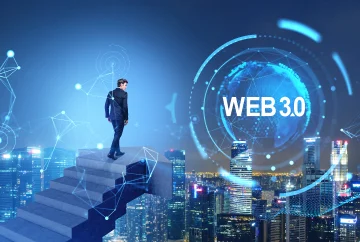
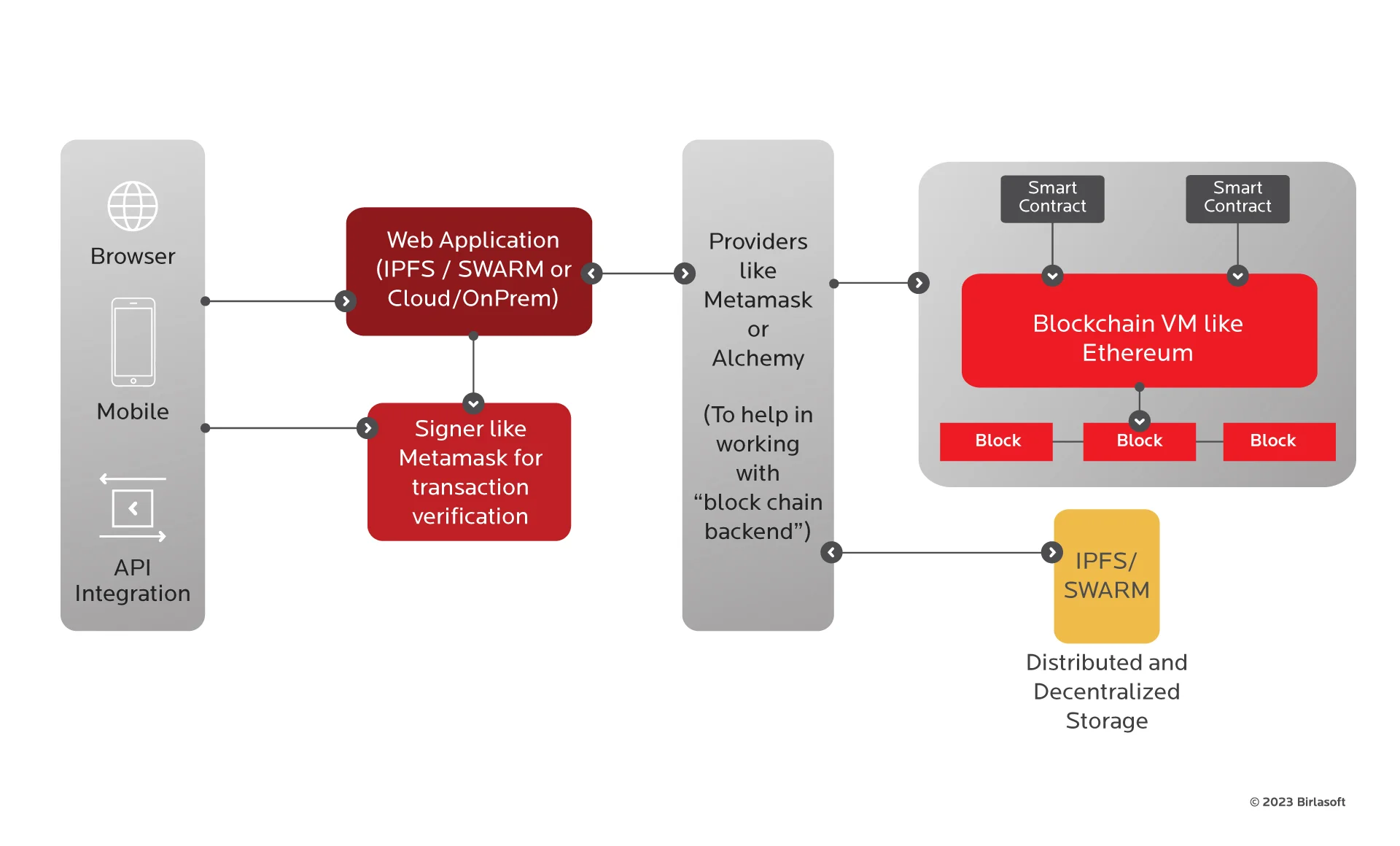
DApp Architecture
Challenges to Tackle on the Way Toward a Decentralized Web
- Data security - While blockchain is mostly considered secure, hackers have exploited its vulnerabilities. DDoS attacks, Sybil attacks, malleability attacks, race attacks, wallet cloning, phishing, and loss of keys are some vulnerabilities in blockchain systems. Additionally, the decentralized system makes it difficult to track transactions, leading to greater complexity.
- Data availability - With increased dependence on user-owned and user-controlled content, data availability could become a concern.
- Reliability - Decentralization of data will mean tackling challenges that deal with ensuring accuracy, originality, and validation of information.
- Regulation - Without a central authority, regulations surrounding Web 3.0 are scarce. Concepts such as smart contracts are still not legally recognized. Until it becomes mainstream, a full-fledged Web 3.0 remains a distant possibility.
- Sustainability - In an ideal scenario, Web 3.0 would promote sustainability. The current situation, however, isn’t so. Blockchain networks continue to consume massive amounts of energy.
- Architecture design requirements - The shift to Web 3.0 would require a complete overhaul of existing system architectures, leading to huge costs.
- UX - The current user experience in Web 3.0 is poor. This will need significant re-design to seamlessly match the experiences that Web 3.0 promises.
- Spread of Misinformation or Undesirable Content - Since the foundational idea of Web 3.0 is to give users control of their data; it would mean that no one else can ban users or delete any undesirable content. This could mean limited governance.
- Cryptocurrency Speculation - Until cryptocurrencies lose their current volatility and are accepted as a real currency, they will remain a niche affair for Web 3.0 transactions.
- Performance - The primary requirement to develop Web 3.0 further is to create effective solutions to the blockchain trilemma (balancing security, decentralization, and scalability). The development of Blockchain alternatives may also accelerate the shift to Web 3.0.
The Way Forward with Web 3.0
With the innumerable possibilities Web 3.0 opens, organizations can tailor their offerings to meet individual needs, expand and target new demographics, improve customer service, accelerate operations, and monitor their supply chains with greater autonomy.
DeFi (Decentralized Finance) is expected to be revolutionary in the financial sector, removing existing authorities and intermediaries such as banks and creating a transparent peer-to-peer system for greater efficiency.
Meanwhile, there is also a growing ideology about Web 4.0, a symbiotic web centered on seamless human-machine interaction, such as via intelligent implants. While that is majorly in the realm of science-fiction at this point, Web 3.0 is poised to become a reality sooner than later.
Recommended
Digital Transformation | 5 Min Read
Digital Analytics | 6 Min Read




